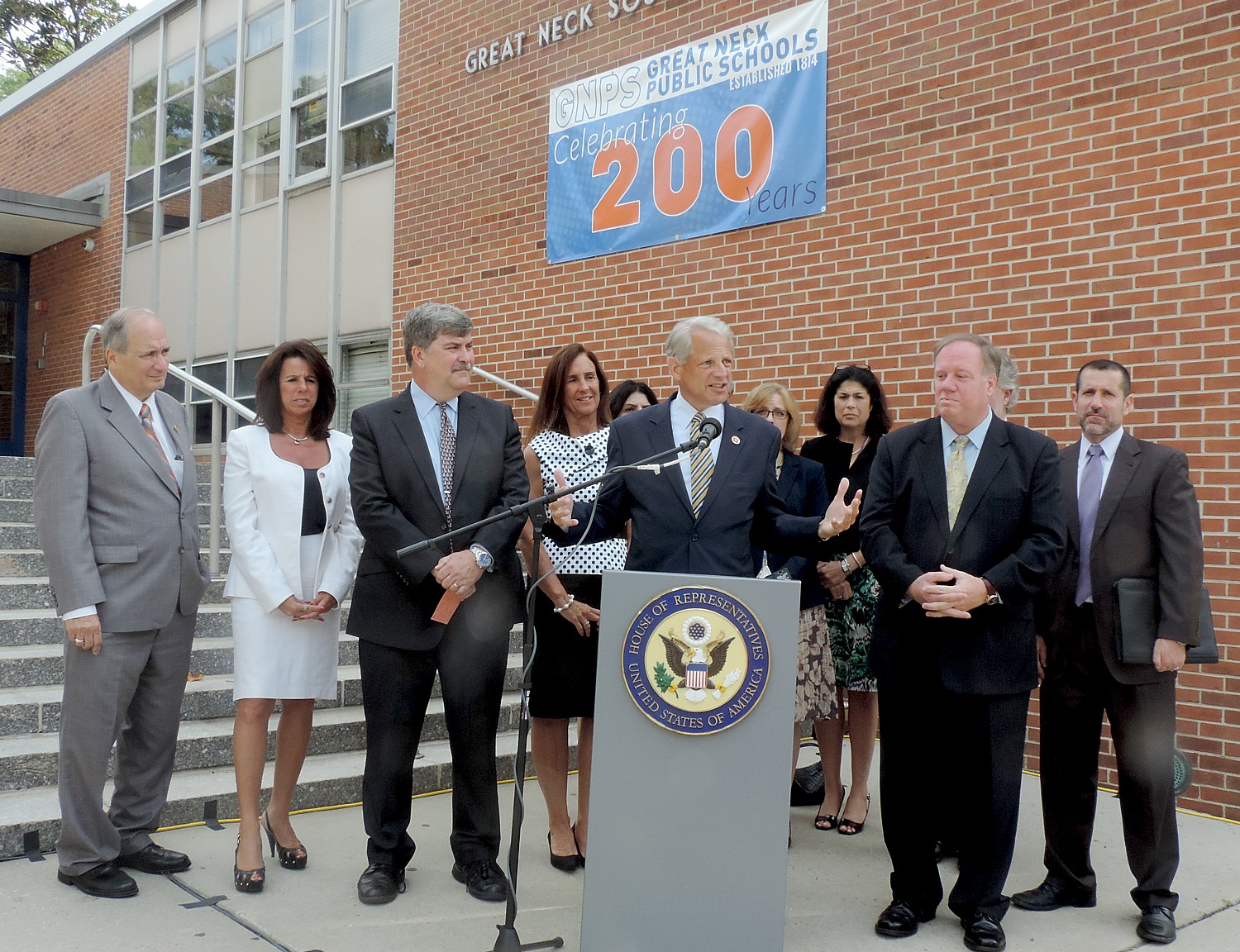
Common Core has become one of those boogeymen memes that elicits hysterical knee-jerk reaction against Big Government intrusion into parental authority and local control over schools. However, what is deliberately set aside is that Common Core was developed at the state level. The point of Common Core was to lift standards for public education. Instead, it has been overtaken by the Accountability Movement which uses testing as a weapon against teacher unions and by the Privatized Education Corporatists as a tool to overturn public education in favor of taxpayer funding of for-profit, privatized charter schools and unconstitutional public funding of parochial schools. The result was over-testing, creating unnecessary stress among public school students (private school students don’t have to take the tests), but a windfall for private testing and tutoring companies. In these waning days of the Obama Administration, which has worked so hard to improve public education for all, the White House has announced new, rational steps to create “better, fairer and fewer tests” in schools. . – Karen Rubin, News & Photo Features
FACT SHEET: White House Announces New Steps to Create Better, Fairer and Fewer Tests in Schools
“When I look back on the great teachers who shaped my life, what I remember isn’t the way they prepared me to take a standardized test. What I remember is the way they taught me to believe in myself. To be curious about the world. To take charge of my own learning so that I could reach my full potential. …
I’ve heard from parents who worry that too much testing is keeping their kids from learning some of life’s most important lessons. I’ve heard from teachers who feel so much pressure to teach to a test that it takes the joy out of teaching and learning, both for them and for the students. I want to fix that.”
– President Barack Obama, October 2015
When done well, assessments give parents, teachers, and students critical information on whether all students in a community are progressing each year toward college and career readiness. When used appropriately, they also serve as an essential protection to promote equity. In too many schools, however, redundant or low-quality assessments are being administered without a clear purpose. These ineffective assessments can consume valuable class time and can take the joy out of learning.
That is why last October, President Obama announced his Testing Action Plan and asked the U.S. Department of Education to work aggressively with states and school districts to make sure that tests students take are worthwhile; high-quality; time-limited; fair and transparent to students and families; and one of multiple sources used to understand how students, educators and schools are progressing. Since then, the Obama Administration has acted to assist states and school districts in ensuring that the tests they are giving are better, fairer and fewer.
The White House and the Department of Education, on December 7, brought state and district leaders together with educators, parents, technologists, developers and philanthropic leaders to discuss the impact of the Testing Action Plan and what more can be done to ensure that tests are better, fairer, and fewer. As part of the event, the Department of Education announced additional resources and guidance for states and school districts aligned with the Testing Action Plan, including nearly $8 million in grants to the Maryland State Department of Education and the Nebraska Department of Education to develop new and innovative ways to measure science achievement that can serve as models for other states.
New Federal Resources to Help States and School Districts Improve Testing
The White House and the Department of Education are announcing new efforts designed to help states and school districts improve their assessments and help them evaluate the totality of their assessments in order to eliminate unnecessary or low-quality tests. Today’s announcements include:
- $8 Million in Grants to Make Tests Better: The Department of Education is announcing nearly $8 million in funding to the Maryland State Department of Education and the Nebraska Department of Education through its Enhanced Assessment Instruments Competitive Grant Program (EAG). This round of EAG provides resources to improve the quality of state assessments used to measure academic achievement, to provide opportunities for innovation through the use of technology and the development of new, innovative item types, and to develop better scoring mechanisms for communicating and using assessment results to support teachers and students. President Obama’s fiscal year 2017 budget included a $34 million request for “Competitive Assessment Grants,” the successor to the Enhanced Assessment Grants program under the Every Student Succeeds Act (ESSA). The two projects funded this year support the work of to two consortia that represent eight states to develop high-quality science assessments.
o The Innovations in Science Map, Assessment, and Report Technologies (I-SMART) Project, led by the Maryland State Department of Education and in partnership with Missouri, New York, New Jersey, and Oklahoma, will produce innovative science assessments aligned to the Next Generation Science Standards to support comprehensive alternate assessments for students with the most significant cognitive disabilities. It will contain multiple measures of student progress over time, develop a science learning map that includes multiple pathways for students to learn science content and reach challenging grade-level expectations, and also deliver score reports that improve the information about student performance that is shared with educators and families.
o The Strengthening Claims-Based Interpretations and Uses of Local and Large-Scale Science Assessments (SCILLSS) project, led by the Nebraska Department of Education in partnership with Montana and Wyoming, aims to improve the quality of statewide science assessments. The project will leverage existing tools and expertise to generate more resources to strengthen states’ ability to create and evaluate quality science assessments. The project will also engage state and local educators to clarify the interpretations and uses of assessments scores and to create tools to improve the usefulness of student performance results.
- Regulations to Create Better, Fairer, and Fewer Assessments under the Every Student Succeeds Act (ESSA): The Department of Education is releasing two final regulations designed to give states and school districts clarity and flexibility as they implement the assessment provisions under Title I of the ESSA. These regulations seek to clarify the statutory requirement that states administer high-quality, annual assessments to all students by ensuring that these assessments are worth taking and provide meaningful data about student success and equity for all students, while also encouraging states and districts to continue to push the field of assessment forward through innovation.
o Creating Better, Fairer, and Fewer Tests: The final regulation for state assessment systems under Title I, Part A — which are the result of consensus reached when the Department of Education conducted negotiated rulemaking with a diverse group of stakeholders earlier this year — willensure states continue to administer tests that are valid, reliable, and fair measures of student achievement for all students, including by setting clear parameters for meaningfully including students with disabilities and English language learners in state tests and supporting them with appropriate test accommodations. The final regulation also allows states to take advantage of a range of innovative approaches to improve assessment and reduce overall burden, such as implementing computer-adaptive assessments and allowing a district to offer a locally selected, nationally recognized high school tests in place of the annual statewide high school assessment. Taken together, this regulation will help states and districts implement ESSA to create better, fairer and fewer tests.
o Producing a New Generation of Innovative Assessments: The final regulation under Title I, Part B establishes the parameters under which states may take advantage of a new innovative assessment demonstration authority under the ESSA to create, try out, and scale up alternatives to traditional end-of-year large-scale assessments. This demonstration authority, initially available to up to seven states, allows states to rethink assessment systems and pilot new, innovative approaches to measuring student achievement for use in their accountability systems. States with demonstration authority will be allowed to phase-in and use a new innovative assessment system in a subset of their districts, while maintaining their existing system in the rest of their districts, and use the results from both systems for accountability and reporting purposes under the law during the pilot phase. States may also apply for flexibility as a consortium, providing a built-in community of practice to share and work through common challenges as they scale their new innovative assessments statewide.
- Guidance to States on How to Use Federal Resources to Create Better, Fairer and Fewer Tests: The Department of Education is also releasing non-regulatory guidance for states and school districts, which highlights flexibility in ESSA for how states and districts can use federal funds to support the President’s Testing Action Plan. The guidance outlines how states and districts can use federal funding under the ESSA to ensure high-quality assessments for all students; reduce testing time; eliminate redundant, duplicative assessment; and provide clear, transparent and actionable information on assessments to students, families, and educators. This ESSA guidance applies starting in fiscal year 2017 (i.e., the 2017-2018 school year) and updates previous guidance ED released earlier this year.
- Profiles of Districts that are Taking Action to Improve Assessments: The Department of Education is releasing profiles highlighting the steps taken by two districts, Eminence Independent Schools (KY) and Vancouver Public Schools (WA), to reduce and improve assessments. Eminence saw dramatic improvements in student achievement after implementing a learner-centric education model that focuses on differentiated instruction, personalized learning, continuous growth, and the use of formative assessments and alternative means to assess student progress. Vancouver Public Schools conducted an audit of its district-required assessments in 2015 and eliminated 105 administrations of district-required assessments allowing the district to return an average of 900 minutes back into the classroom across grades 3 – 8. These profiles build on a report the Department released in April, highlighting the work of leading states and districts to improve assessment and ensure class time is preserved.
- Information on Technology-Delivered Assessments Supported by the Institute of Education Sciences: The Institute for Education Sciences (IES) is releasing ablog that highlights some of the technology-delivered assessments funded through IES. Since its inception in 2002, three IES programs, including the Research Programs at the National Center for Education Research (NCER) and at the National Center for Special Education Research (NCSER), and the ED/IES SBIRprogram have made over 200 awards supporting the development of new technology-delivered assessments. The awards were made to a mix of academic researchers, entrepreneurial firms, and larger education organizations. All of the projects included a rigorous research and development process with studies to validate that assessments are measuring what is intended and pilots to test the promise of the technologies for improving student learning outcomes. Later this month IES will release a more detailed report highlighting the technology-delivered assessments and innovations in the assessment field funded through three research programs.


